I bet one of the first things you dropped a boatload of money on when you were pregnant was a car seat. Even if you live in Manhattan and you don’t own a car, the hospital will not discharge your baby until they see him/her strapped into a bucket, ready to go home safely.
So now you’ve got this fancy car seat…but it’s a wee bit more complicated to use correctly than just strapping in your babe and rolling out with “Life Is a Highway” blasting on the speakers.
Enter your Dad and Grandma shrugging and rolling their eyes at you. “We didn’t even have car seats for kids when I was growing up” they’ll say. They’re not lying, but I’m not sure things were exactly better back then. Shit, one time in the 80s one of my friend’s dad’s took a sharp turn, the back door of the car flew open and my friend straight-up fell out of the car into the street. We’ve come a long way with car safety.
I’m not going to get all preachy and judgey and make you feel terrible. This post exists because we want your precious kiddo to be safe!
Even if you think you’re doing everything right, please read on. I have seen enough new parents make these common mistakes to know that everyone has done one or two, including yours truly.
Common Car Seat Mistakes:
Here are some of the most common mistake parents make with car seats.
1. Chest Buckle Position
This was the very first error I made when I first clipped my baby into her car seat.
That chest buckle belongs at the chest, or level with your baby’s armpits, not down on the belly or up by the neck. That way in the event of a crash, you want that clip pressed into your child’s firm chest bone and not their soft, squishy, delicate internal organs.

2. Strap Snugness
Dude. You’ve gotta make those straps TIGHT. I know you don’t want to smoosh your tiny tot, but the car seat is basically useless if they aren't strapped in tightly.
How tight should the straps be? You shouldn’t be able to pinch the strap at all if it is tightened properly. Check out this visual. The tighter the straps, the less of a jolt your baby will get during a crash, thus greatly reducing the chance of injury.
Check your car seat’s manual to learn how to tighten the straps–most car seats have an easy way to tighten the straps by pulling a tether strap below the crotch buckle.
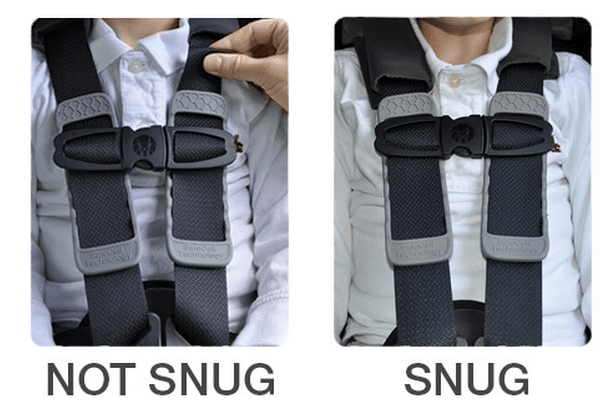
3. No Puffy Winter Coats
While we’re on the topic of straps and snugness, did you know your baby should not wear her winter coat in the car seat?
Basically, all that extra padding, fluff, and insulation in a coat compresses during a crash making the straps loose, which is extremely unsafe (see above).
If you doubt me on this one go ahead and test it: go buckle your babe in with their coat on then take their coat off and put them back in the seat without adjusting the straps. Does it pass the pinch test?
I know you want your weeble to be warm so check out these tips for safe layering in the car.
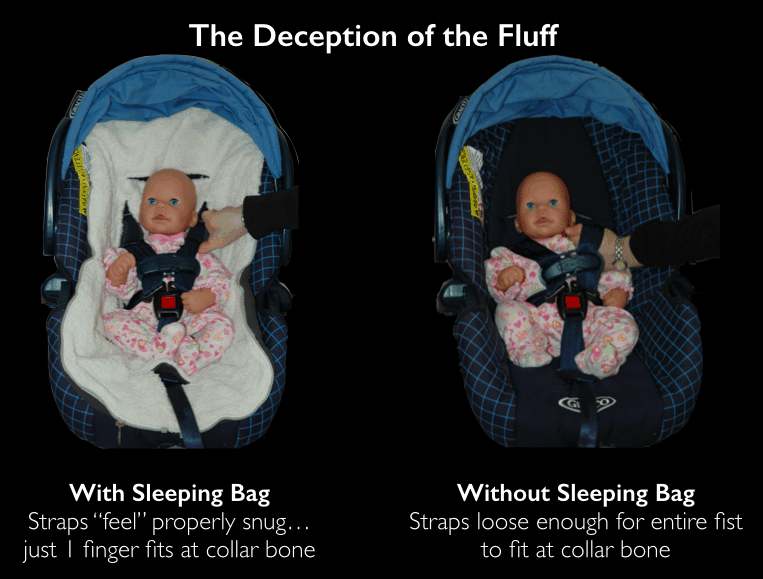
4. Harness Height
Here’s another one I had no clue about until one of my friends brought it up with me years ago.
You’ll notice that your infant and convertible car seats have several slots for the shoulder harnesses. When a child is rear-facing the shoulder harness should be in the slot at or below a child’s shoulder. And a forward-facing child in a convertible seat needs to have the straps start above shoulder height, usually in the top position.
A common mistake is for a parent to have their toddler rear-facing with the lower harness height and then change the same seat to forward-facing without adjusting the harness level to the top spot. Check your car seat’s manual to confirm what the safest harness position is for your make and model.
Rear Facing:

Forward Facing:

5. Rear-facing vs. Forward-facing
Speaking of turning your kiddo around, let’s discuss when you should do it. When I first became a parent it was traditional to flip your rear-facing baby forward soon after his first birthday, sort of like a fun milestone.
However, the more current recommendation from the American Academy of Pediatrics is to wait until age 2, at minimum. This is one of those topics where people’s undies get into a bunch because they feel strongly that their toddler deserves to be facing the same direction as the rest of the family, or that he is somehow being deprived by facing the rear.
While I understand that parenting preference, there is actual science that proves rear-facing is safer. You can read all about the research in detail but the gist is that a toddler’s spine is connected with cartilage, not bone, so the risk of a severe spinal cord injury in a crash is far higher for young kids than adults. Rear-facing car seats give far greater support to a child’s head, neck, and spine and prevent the (giant) toddler head from flinging far away from the body.
This isn’t a matter of opinion, it is a matter of fact: rear-facing through the toddler year is just safer. Keep that kiddo facing the back as long as you can!
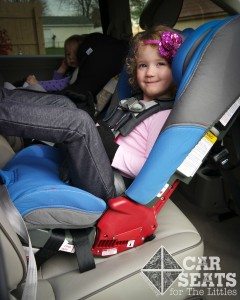
6. Location of Car Seat in the Car
You probably know to put your infant car seat in the back seat, far away from the active airbags in the dashboard. But is there a safest location in the back seat? Statistics show that the middle of the back seat is the safest place for your baby because the car cannot take a direct impact in the center.
If your car does not have the LATCH system in the back middle seat then you can use the seat belt to secure the seat. However, it is sometimes difficult to secure the seat tightly in the middle seat. If this is the case, move the seat to a window seat where it can be securely installed.

7. No Extra Stuff
All the car seat safety experts out there agree that there should be no extra stuff added to the car seat. That means all those cute newborn head positioners, strap pads and cup holders aren’t safe because they weren’t tested with the seat and may alter how the seat responds in a crash.
Also, extra stuff like sun shades, cups, and hard books pose a risk during a crash because they become projectiles in a car.
Real talk: I know you might be rolling your eyes because don’t we all hand or kids a snack and drink in the back seat? I just did this yesterday. But I just read about some poor little kid who got scalped by his sippy cup when another car ran into his going 45mph. Imagine that anything that is loose in your car – purse, water bottle, toys – can turn into a dangerous projectile flying through your car.
It’s just physics, man. Stick to soft books, stuffed animals, and blankets for your little one when in the car if you can.
8. Booster Seats
Fast forward a handful of years and you might notice your preschooler is big enough to switch over to a booster seat. (Here are some handy guidelines about when to consider switching from a harness seat to a booster.) Booster seats are super easy and convenient because most of them don’t require an install – you just plop the booster in your car, thread the shoulder belt through a loop, and you’re good to go.
However, heads-up about this common booster seat mistake: if the kid exits the car and you’re going to continue driving (after school drop-off, for example) have your child buckle in the empty booster seat before they hop out. A loose booster seat can cause some major injuries flying around the car in the event of an accident (see above).
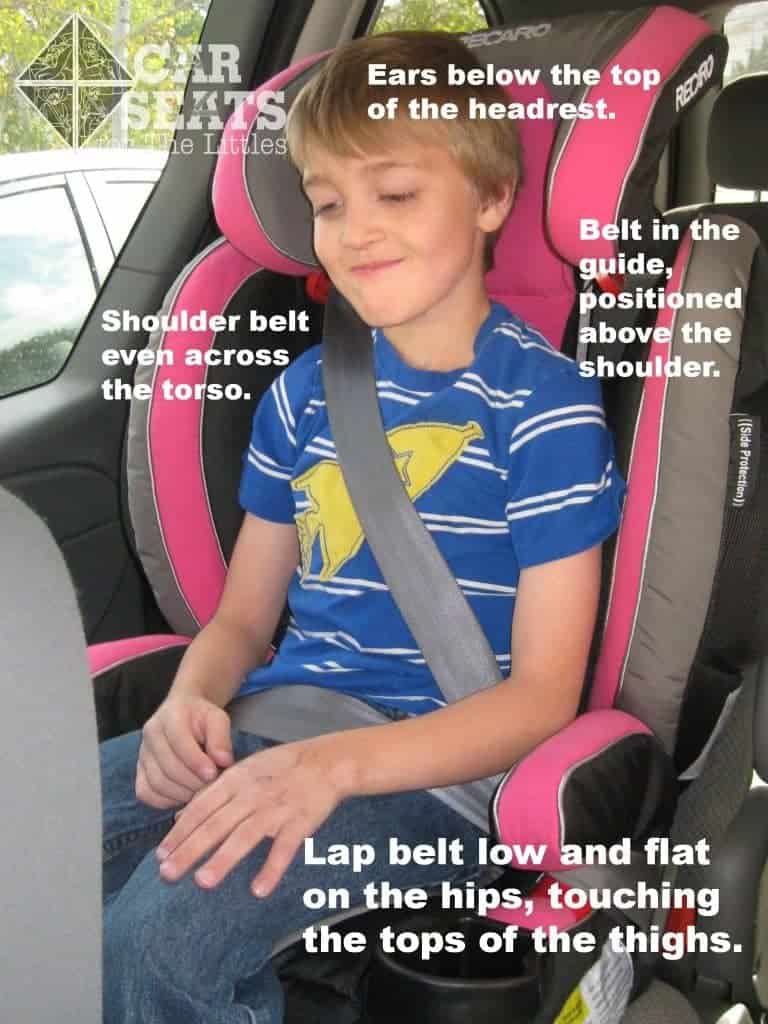
Don't Use a Car Seat If:
- It’s expired. Car seats typically expire every six years. They have an expiration date because plastic weakens and becomes brittle over time – not a great quality to have in something that is supposed to keep your kid alive in a crash.
- It has been in a crash. Most car seat safety experts advise that you trash a car seat after it has been in any crash, even a minor one. The good news is that your insurance company may cover the cost of a new one, along with the repairs to your vehicle.
- It’s a hand me down/second-hand and you don’t know anything about the crash history of the seat.
Don't throw it out though, Target runs a trade in program where you can swap an old car seat for a 20% off coupon. They run them a couple of times a year but check out the details here.
If all this information has you feeling queasy and anxious, take a deep breath and set up an appointment with a Child Passenger Safety Technician to help install your seat or check out your current set-up. Head here to find a technician.
Life is a highway! Drive safe!
Related: Car Seat LATCH Rules

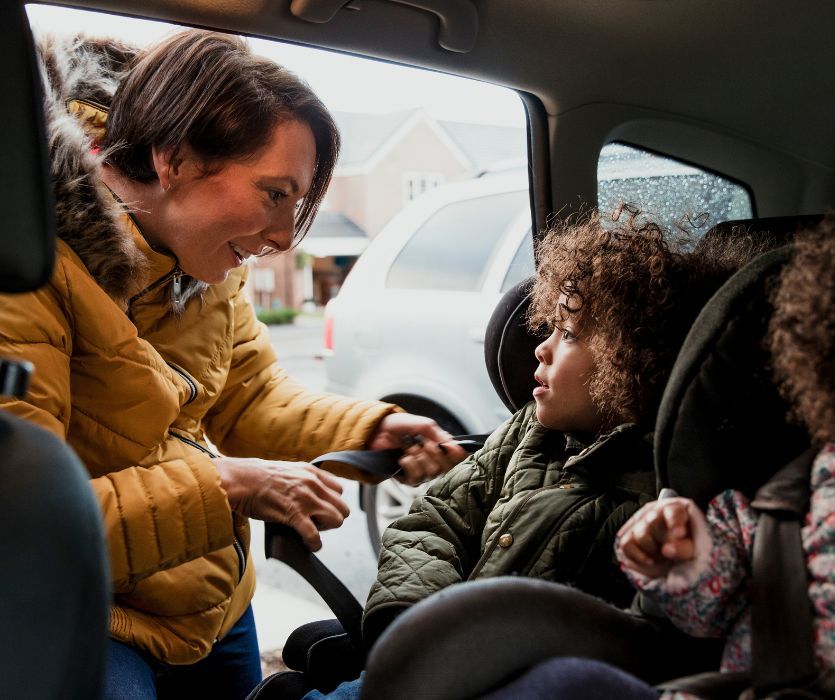
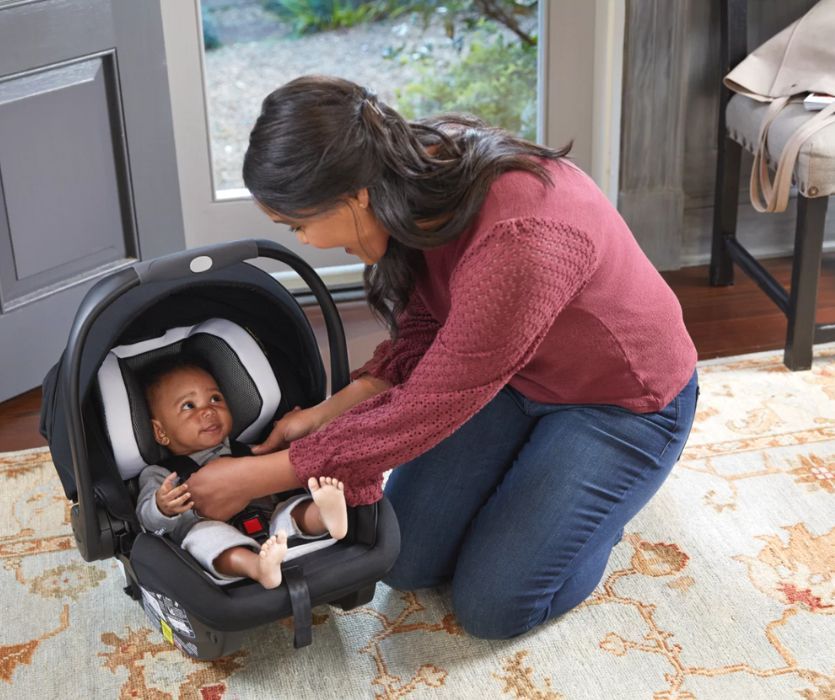
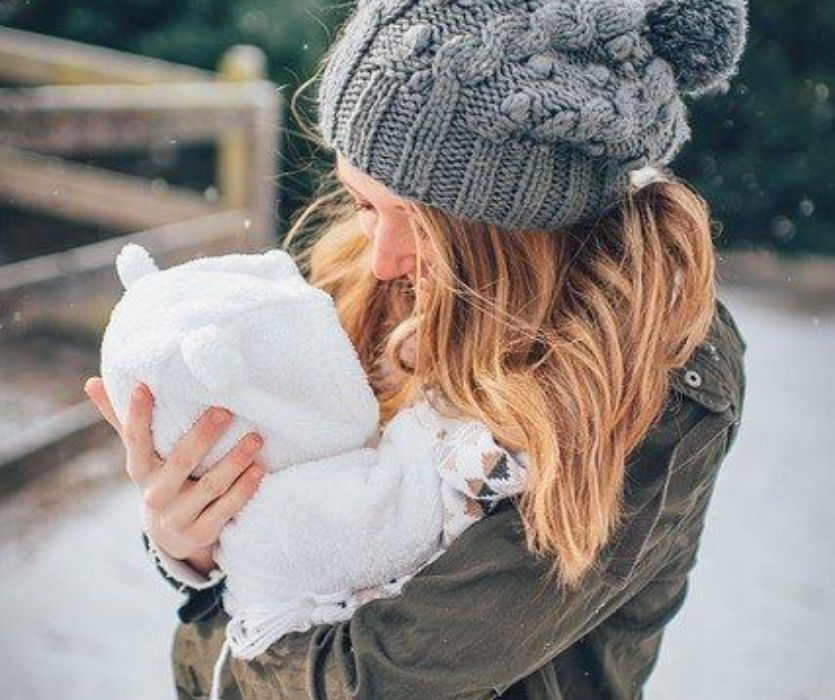
Leave a Comment